Kale is cool, but have you tried phodshi? Go back to the roots to dig up lesser-known seasonal, indigenous ingredients that make the plate more diverse
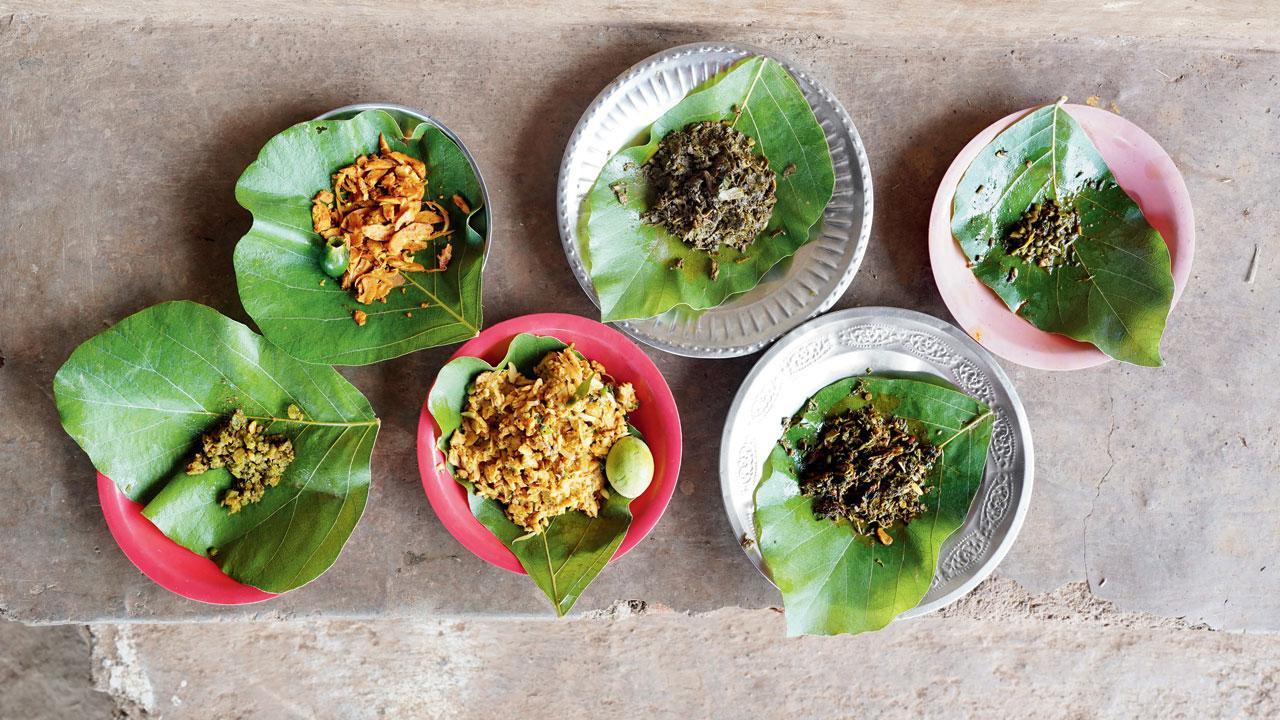
Cooking leafy vegetables is simple, often with basic ingredients
Think of five leafy vegetables: spinach, fenugreek, dill, spring onion and amaranth. Great! Can you think of others? Bit of a brain freeze, eh? Palak paneer, methi parathas and Chinese dishes have acclimatised our palate to only a few, known varieties of leafy vegetables. So when Chef Ajay Chopra introduced 48 edible varieties of leafy vegetables on a television show, we got thinking about how well we know our food.
 Phodshi
Phodshi
Pattay ki Baat hopes to start a dialogue around the nutritional and medicinal value of locally found greens, and in the process, create a demand to increase cultivation of these veggies. “The idea,” says Chopra, “is to introduce the audience to different leafy veggies and change the way we look at food in Indian homes. For us, this isn’t a novel concept, just a forgotten one. Take radish, for instance: We eat the vegetable and discard the delicious leaves. It’s the same with matar ke patte, which we rarely hear of and never consume, but they are yummy and rich in antioxidants, Vitamin A, and B12. We know of kale as a superfood but so is bel ke patte—flavourful and packed with nutrients.”
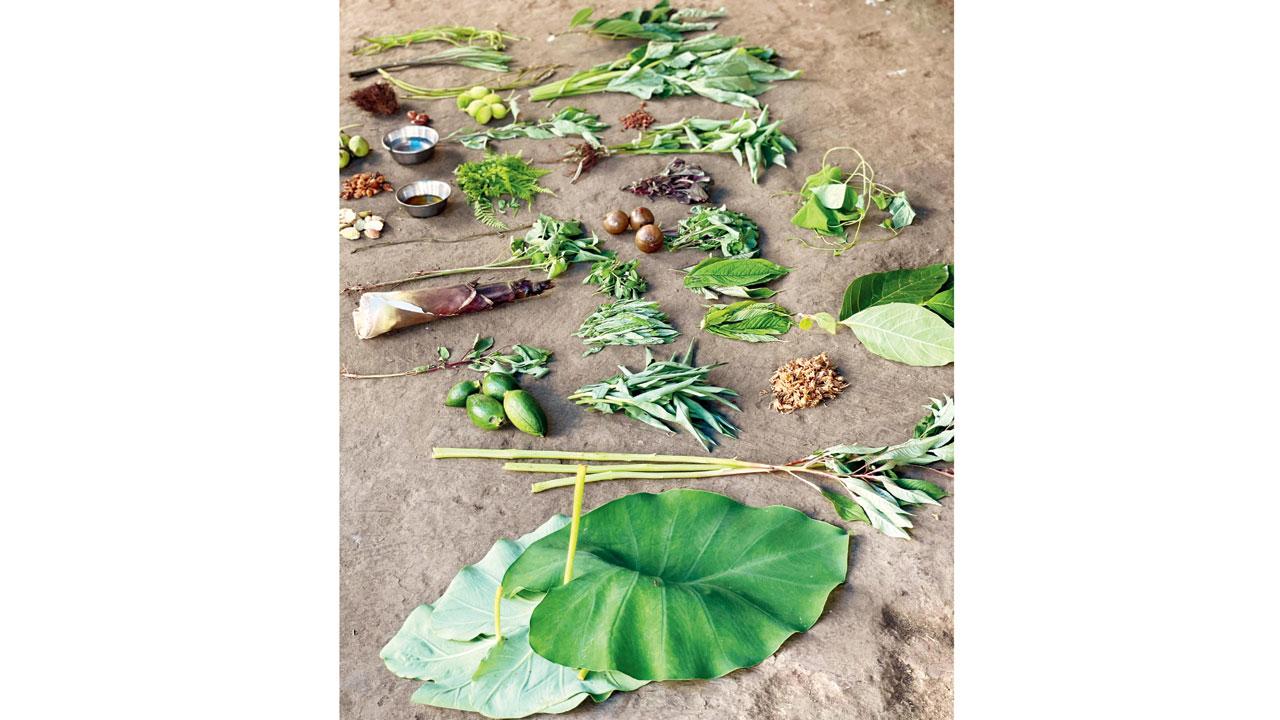
With The Locavore, founder-chef Thomas Zacharias aims to offer a deeper understanding of where our food comes from, who grows it, and the impact of our food choices as consumers
While working on the #WildFoodProject, Chef Thomas Zacharias came across 20 varieties of leafy greens, mainly consumed by tribal communities. Phodshi, he says, has become one of the better known greens from the list of the uncommon ones. Available mostly during the monsoon, the long green leaves have a small white segment at the bottom that some prefer to discard, although it is edible. Phodshi tastes like a mix of spring onions, green garlic and spinach. When cooked, it develops a complex flavour. Some make phodshi ka saag, but Chopra has given it an interesting twist by making a vada with it, instead of potatoes. Traditionally, phodshi is cooked as a dry vegetable or can also be used in dal, says Swapneel Prabhu, a culinary enthusiast and recipe developer who documents his food journey @themissingdrumstick on Instagram. His phodshi-potato soup sparked curiosity among his followers.

Culinary enthusiast Swapneel Prabhu goes to the local markets in Borivli and Dahisar and strikes conversations around food with the local tribal communities and Adivasis who come to sell their produce
Zacharias thinks that in India, we are more excited about exotic vegetables such as asparagus, broccoli, kale, and avocado. “Everybody knows kale, but few have heard of kena/keni or akarkora, a perennial herb that grows in the Himalayan region,” he says. During his food walks at Sanjay Gandhi National Park [Borivli], he often spots quite a few uncommon leafy vegetables.
Shriya Naheta Wadhwa, health coach and founder of Zama Organics, an organic vegetable delivery service in Mumbai, has been ahead of the curve and offers two kinds of vegetables—the exotic western variety consisting of arugula, baby spinach, lettuce; and seasonal, local produce consisting of laal math, bathuaa and sarson. “These vegetables are in demand during the season, but when we tried more uncommon ones such as moringa, beetroot leaves, a stalk of laal math, and ghol bhaji, the consumers didn’t take to it,” says Wadhwa. “Exotic vegetables are always in demand as there is a cloud of familiarity around them, and consumers know how to use them in quick salads and stir fry. So they sell well.” A good idea, then, would be to introduce quick and easy recipes to encourage patrons to buy and cook local leafy greens.
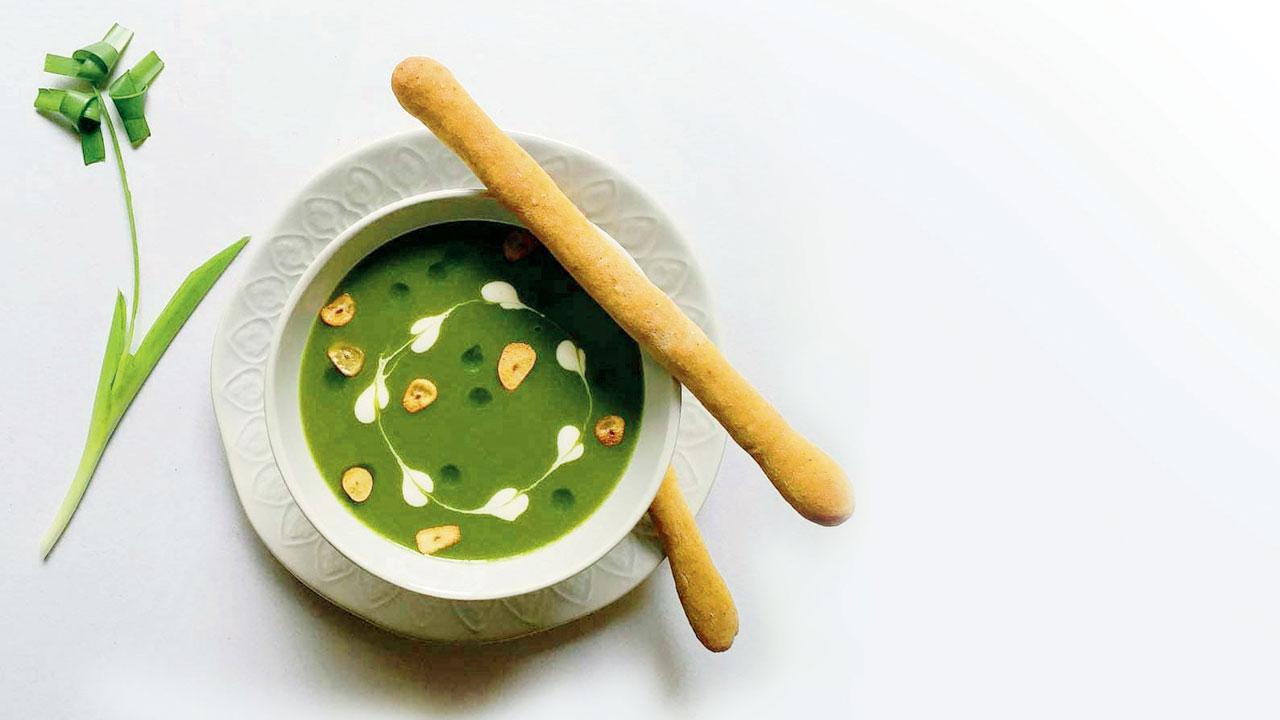
Potato and Phodshi soup
It’s a clear case of knowledge, supply, and demand. Most leafy vegetables are seasonal, Prabhu goes to the local markets in Borivli and Dahisar, where local tribal communities and adivasis sell their produce. “Ask them for a recipe and they’ll share it without hesitation,” he says. “Most often, these are simple stir frys with basic aromatics, onions, and garlic.”
Zacharias prefers the market opposite Grant Road station for rare greens, and urges everyone to go to their local markets with a “curious mind”. “Talk to the vendors, ask them what they have, develop a relationship with them,” he urges. “They may not keep everything on display as there isn’t a demand. We are disconnected from the food we eat because it is now available at the click of a button. We need to go back to where our food comes from, interact with the ones growing and selling it and establish connections.”
Zacharias says not just Indian, even continental food should incorporate these ingredients. “Is there a Japanese stew or ramen that could use phodshi instead of bok choy? For the longest time, we have been substituting local food for western and non-indigenous produce, and I think it’s time for chefs to do the opposite.”
Thankfully, a small number of chefs are already doing just this—trying to cultivate curiosity about local greens by giving them familiar forms. Think aloe vera ki sabji, moringa ki puri, roselle leaves halwa and bel ke patte ki thandai that Chopra often makes. Now, if only we had more.
Paan ka kofta
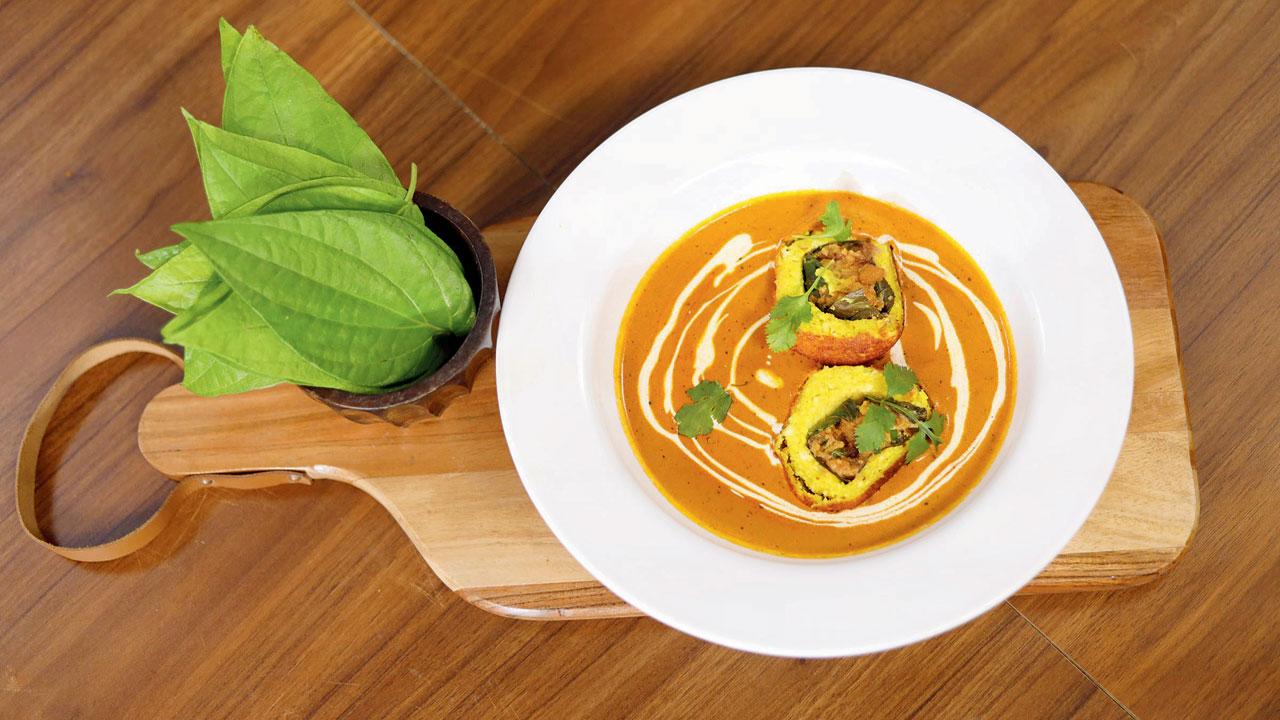
Ingredients
For the gravy
2 tbsp oil
2 tomatoes (roughly diced)
1 onion (roughly diced)
9-10 garlic cloves
1 inch sliced ginger
1 green chilli
6-7 dry red chillies
10-12 cashew nuts
1 tsp turmeric powder
1 tsp degi red chilli powder
1 tsp coriander powder
2-3 cinnamon sticks
2-3 cardamom cloves
4-5 black peppercorns
2-3 cloves

Chef Ajay Chopra is starting a dialogue around uncommon leafy vegetables and zero-waste cooking
For the kofta stuffing
11-12 deep fried cashew nuts
15-16 fried raisins
1 tbsp chopped ginger
1 chopped green chilli
4 tbsp khoya
1 tsp red chilli powder
1 tsp dry mango powder
1 tsp lime juice
Salt to taste
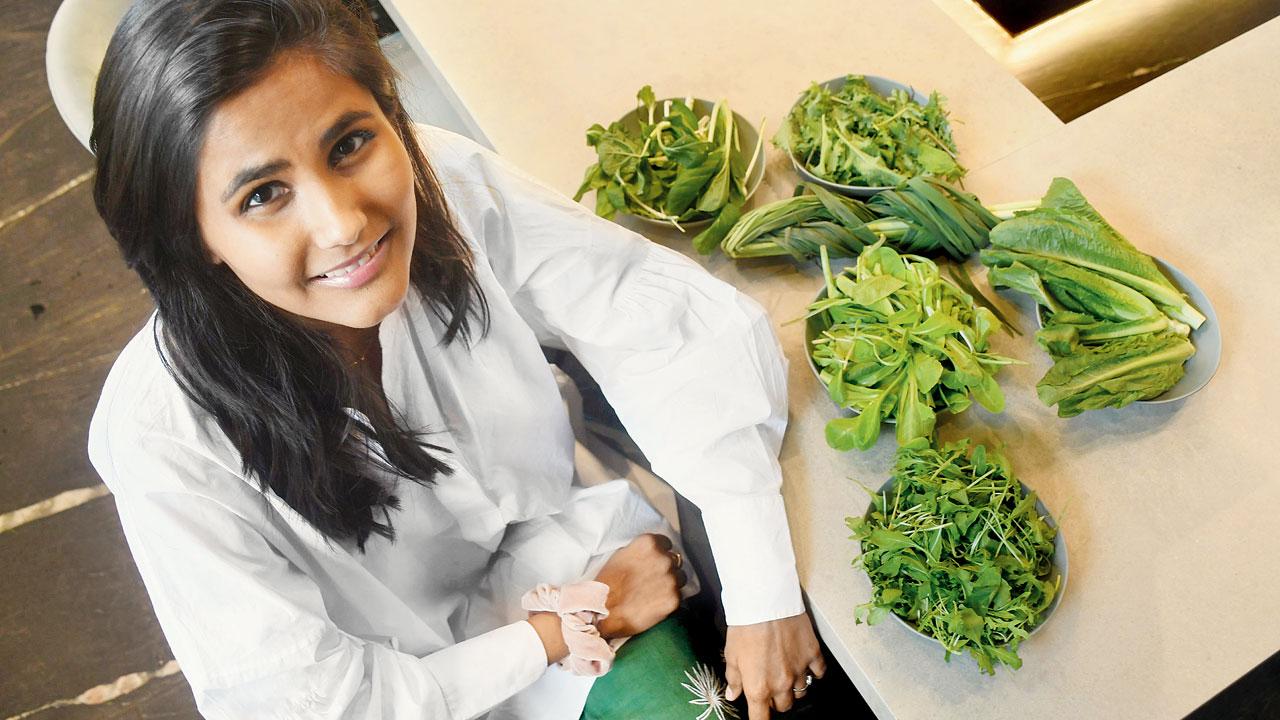 Shriya Wadhwa’s Zama Organic promotes leafy greens Pic/Ashish Raje
Shriya Wadhwa’s Zama Organic promotes leafy greens Pic/Ashish Raje
For outer stuffing
250 gm cottage cheese
5-6 tbsp khoya
½ tsp turmeric powder
1 tsp garam masala
50-60 gm bread crumbs
Salt to taste
Mix it well
Method
In separate bowls, put together the stuffing mixture and the outer stuffing mixture. Place the stuffing mixture inside blanched betel leaves (boil water and add betel leaves, then put into ice-cold water) and pack it. Coat the stuffed betel leaves with outer stuffing and make kofta balls. Deep fry them and keep aside.
Heat oil in a pan, add the ingredients for the gravy and cook till the onion and tomatoes are cooked. Add water as required. Once done, grind the mixture to a paste.
In another pan, add butter, ginger-garlic paste, red chilli powder and the cooked gravy paste. Add water as required and let cook. Add fresh cream. Serve with the fried betel leaf balls.
Aloe vera ki sabzi
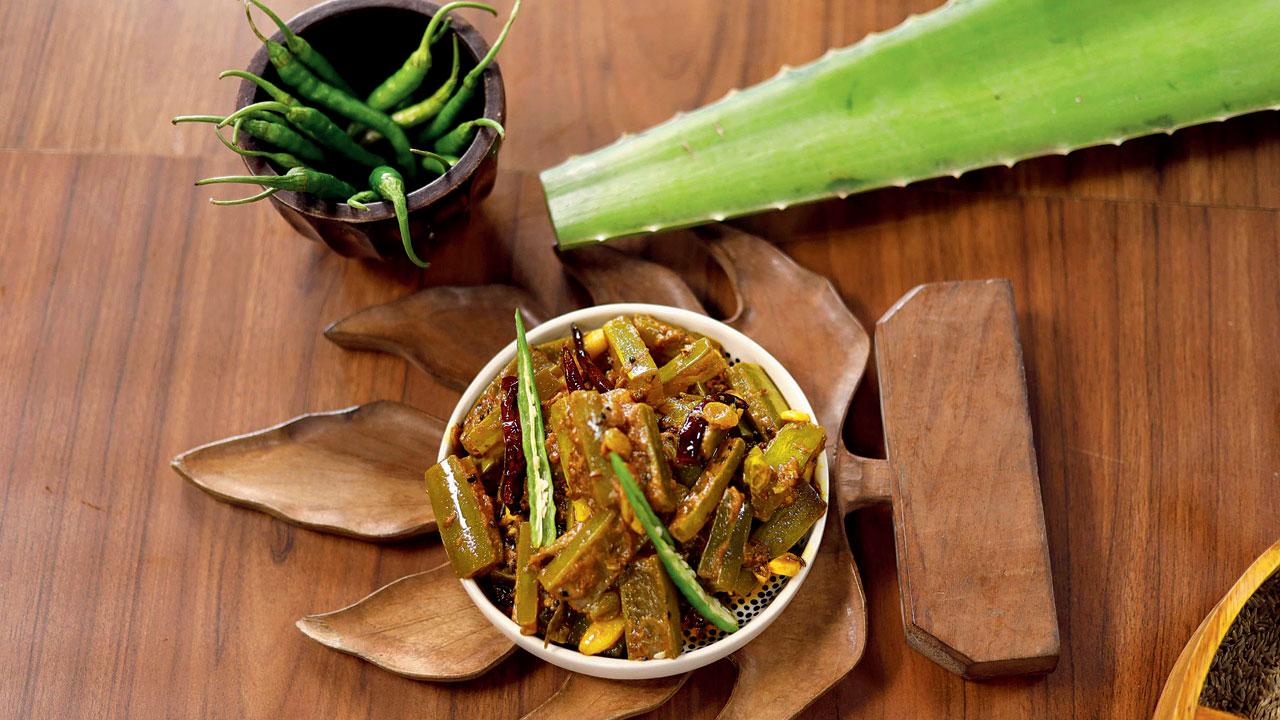
Ingredients
2 tbsp oil
1 tsp panch phoran masala
5-6 green chillies
6-7 dry red chillies
20-25 peeled garlic cloves
2 chopped aloe vera leaves
1 tsp asafoetida
1 tsp turmeric powder
1 tsp coriander powder
1 tsp dry mango powder
9-10 raisins
Salt to taste

Chef Thomas Zacharias
Method
Slice off the thorny side of the aloe vera leaves and cut them into small pieces. Heat oil in a pan, and add masala, green chillies, dried red chillies, peeled garlic cloves, and aloe vera leaves. Let it cook. Add water as required and cook till done. Serve with chapati or rice.
Go wild
£ WildFoodProject organises wild foods walk inside Sanjay Gandhi National Park to learn about monsoon wild foods growing in our city.
@ thelocavore.in
Save the forest
Join a wild foods foraging workshop or replanting to learn more about indigenous foods found in Aarey Forest
email: aareyforestmumbai@gmail.com
 Subscribe today by clicking the link and stay updated with the latest news!" Click here!
Subscribe today by clicking the link and stay updated with the latest news!" Click here!










